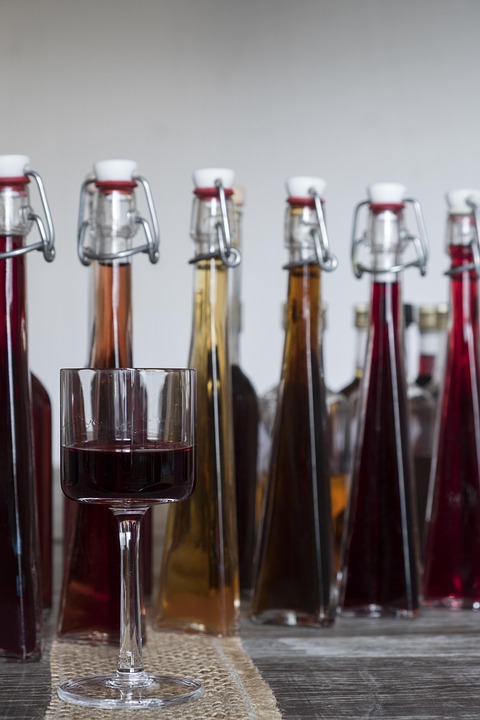Introduction
Flavored liqueurs have been gaining popularity in the ready-to-drink (RTD) space, providing consumers with a wide range of options to enjoy their favorite cocktails without the hassle of mixing ingredients. This trend has opened up new opportunities for beverage companies to innovate and cater to changing consumer preferences. In this report, we will explore how flavored liqueurs are reshaping the RTD market and creating new growth prospects for the industry.
Current Market Trends
Flavored liqueurs have become a key driver of growth in the RTD space, appealing to consumers who seek convenient and flavorful options for their cocktails. According to market research firm Mintel, the global flavored spirits market is projected to reach $4.8 billion by 2025, with a compound annual growth rate (CAGR) of 5.2% from 2020 to 2025. This significant growth can be attributed to the increasing demand for unique and exotic flavors, as well as the rising popularity of at-home mixology among consumers.
Consumer Preferences
Consumers are increasingly seeking new and innovative flavors in their beverages, driving the demand for flavored liqueurs in the RTD market. From fruity and citrusy options to spicy and herbal varieties, consumers are looking for a wide range of flavors to experiment with in their cocktails. This trend is particularly prominent among younger consumers, who value authenticity, quality, and variety in their drinking experiences.
Industry Insights
Leading beverage companies such as Diageo, Pernod Ricard, and Bacardi have recognized the potential of flavored liqueurs in the RTD space and have been investing in product development to capitalize on this trend. Diageo, for example, has introduced a range of flavored liqueurs under its popular brands like Baileys and Captain Morgan, catering to consumers’ evolving taste preferences. Similarly, Pernod Ricard has launched flavored variants of its Absolut vodka and Malibu rum, targeting the growing demand for innovative cocktails.
Key Opportunities
Flavored liqueurs present several key opportunities for beverage companies in the RTD space, including:
1. Diversification of Product Portfolio
By introducing flavored liqueurs into their product portfolio, beverage companies can offer consumers a wider range of options to choose from, appealing to different taste preferences and occasions. This diversification can help companies attract new customers and retain existing ones, driving sales and profitability in the long run.
2. Innovation and Differentiation
Flavored liqueurs allow beverage companies to differentiate themselves in a crowded market by offering unique and distinctive products that stand out from competitors. By experimenting with new flavors and ingredients, companies can stay ahead of consumer trends and capture a larger share of the market.
3. Cross-Promotion and Collaborations
Flavored liqueurs provide opportunities for cross-promotion and collaborations with other brands, restaurants, and influencers, creating buzz and excitement around new product launches. By partnering with popular mixologists or celebrity endorsers, beverage companies can leverage their credibility and reach a wider audience of cocktail enthusiasts.
Challenges and Considerations
While flavored liqueurs offer promising growth prospects in the RTD space, beverage companies must navigate several challenges and considerations, including:
1. Regulatory Compliance
Beverage companies must ensure compliance with regulatory requirements and labeling standards when introducing flavored liqueurs into the market. This includes accurately disclosing ingredients, alcohol content, and allergens to consumers, as well as adhering to advertising and marketing guidelines to prevent misleading claims.
2. Supply Chain Management
Managing the supply chain for flavored liqueurs can be complex, as companies need to source high-quality ingredients, ensure product consistency, and maintain inventory levels to meet consumer demand. Beverage companies must work closely with suppliers and distributors to optimize production processes and deliver products efficiently to retailers and consumers.
3. Competition and Pricing
The RTD market is highly competitive, with numerous players vying for market share and consumer attention. Beverage companies must differentiate their flavored liqueurs through innovative marketing strategies, product positioning, and pricing strategies to stand out in a crowded market. Pricing considerations are also important, as companies need to balance affordability with quality to attract price-sensitive consumers.
Conclusion
Flavored liqueurs are driving growth and innovation in the RTD space, offering beverage companies new opportunities to expand their product offerings and reach a wider audience of consumers. By capitalizing on consumer preferences for unique flavors and convenient options, companies can stay ahead of market trends and secure a competitive edge in the evolving beverage landscape. As the demand for flavored liqueurs continues to rise, beverage companies must adapt to changing consumer preferences, regulatory requirements, and competitive pressures to succeed in this dynamic and fast-paced market.




